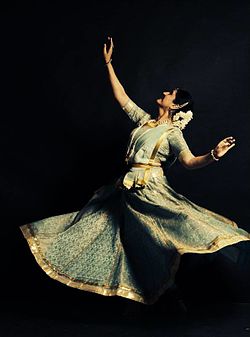Prerana Deshpande | |
|---|---|
 Prerana Deshpande in a concert on 1 September 2016, at Mahaveer School Auditorium, Jaipur. | |
| Nationality | Indian |
| Citizenship | Indian |
| Education | Indian classical dance, Mathematics |
| Alma mater | Pune University |
| Occupation(s) | Classical Dancer, choreographer, researcher |
| Organization | Nrityadham |
| Style | Kathak |
| Awards | Devadasi National Award (see all) |
Prerana Deshpande is a recognized Indian exponent of Kathak dance. [1]
Contents
She started to study Kathak under Sharadini Gole when she was seven years old. Her first performance was when she was fifteen years old. [2] Then she studied Kathak under Guru-Shishya Parampara tradition from Rohini Bhate, [2] of Lucknow and Jaipur gharanas for twenty two years. [3] She is known for her graceful movements, and for mastery over various aspects of Kathak, such as abhinaya (expression) [4] and command over the laya (rhythm). [5]
Prerana Deshpande received her formal education at the Centre of Performing Arts of Pune University (Lalit Kala Kendra), India. She completed her master's degree in Kathak and stood first in the university. She also completed a bachelor's degree in Mathematics, [2] and applies this formal mathematical knowledge to her dance. [6]
In dedication to her art, Deshpande established Nrityadham, an institute for Kathak dance in Pune, where she teaches students from India and abroad, [7] [8] and has a stable group of advanced performers who participate in shows and festivals. [9]